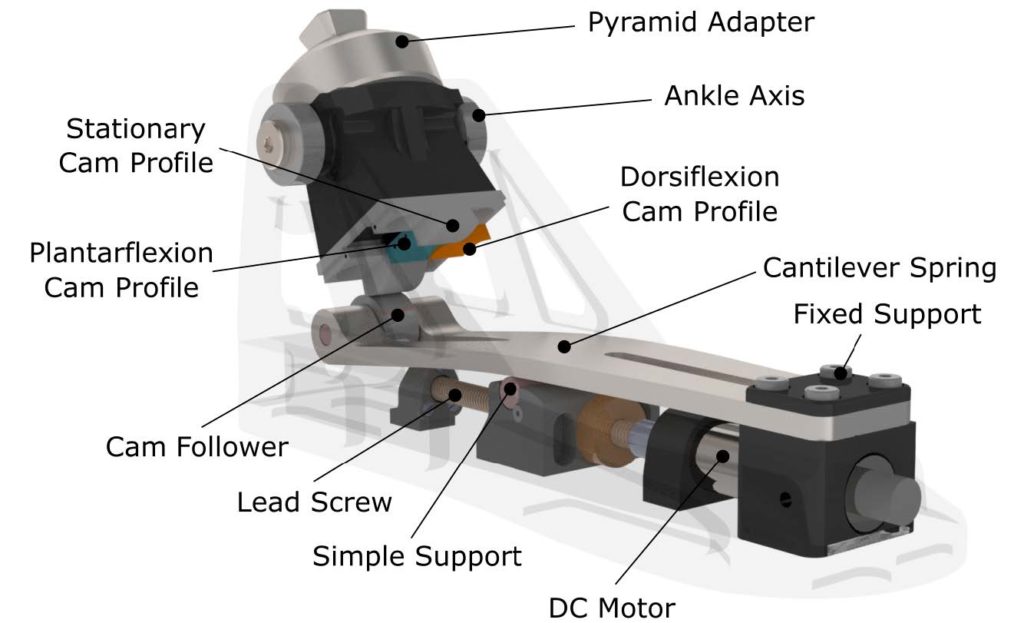Decoupled Energy Storage & Return Prosthetic Ankle
Motivation

The muscles that span the ankle are critical to functional, efficient gait. In particular, these muscles provide the push off power necessary for the foot to leave the ground and swing forward. Common prosthetic feet attempt to emulate intact ankle function by acting like a spring by capturing energy at heel strike and releasing it at toe-off. But the amount of energy is much less than what an intact ankle produces. To mitigate these deficits, researchers have developed powered prosthetic feet which are able to provide power during push off, but those require external power to be added into the system. These prosthetic feet have many downsides including being cumbersome, loud, and expensive. In order to provide more push off power to amputees at toe off without the drawbacks of attaching a powered prosthetic, we have leveraged the customizable torque angle properties of the VSPA foot. We coupled the VSPA foot’s cam design with a passive, magnetic switching mechanism that is able to interchange cams with unique torque angle profiles at specific points in the gait cycle.
Approach
As a case study to highlight one of the uses of a mechanism like this we designed a Decoupled Energy Storage and Return (DESR) prosthesis. This prosthesis utilized two, unique cam profiles that were active at different points in the gait cycle (see below) thereby capturing energy normally dissipated at heel strike and returning it at terminal stance. Using a custom dynamometer, we characterized the DESR foot’s performance in capturing and returning energy when manually moved through typical ankle range of motion. The DESR foot was able to capture additional energy at heel strike and recycle it at push off, but energy was still lost due to hysteresis. Despite not achieving net positive mechanical work the DESR foot showed much less energy loss than other energy storage and return prosthetic feet. Future work will continue to improve upon the DESR foot to reduce mechanical losses. Also, we will explore other implementations of the dual cam system such as creating a dorsiflexed equilibrium ankle angle for the cam that is active during swing to prevent toe scuffing.

(a) Key positions in the stance phase and average torque-angle curve for able-bodied subjects during level ground walking at a natural speed, from Bovi et al. (2011). (b) A passive approximation of the healthy torque angle behavior, defined by two distinct nonlinear torque-angle curves. A positive angle represents dorsiflexion and a negative angle represents plantarflexion.
This video illustrates the magnetic switching mechanism as the ankle is moved through a typical range of motion.
